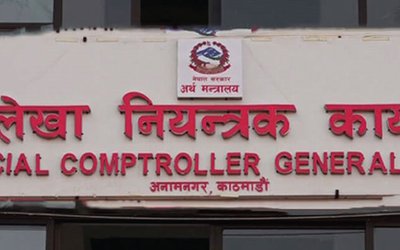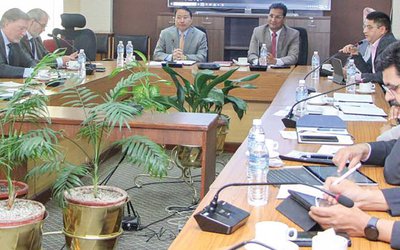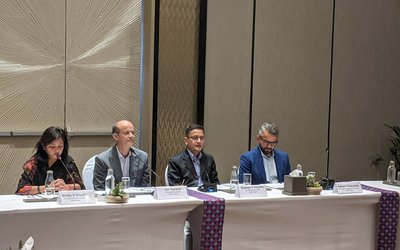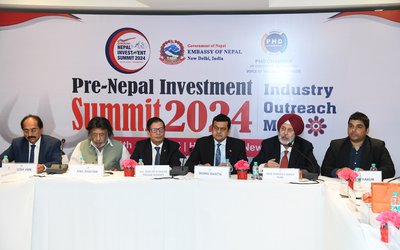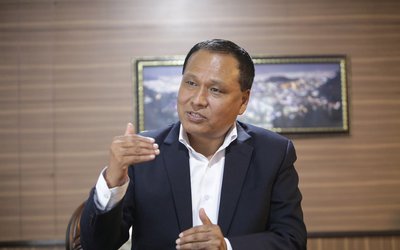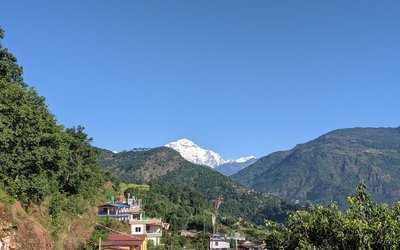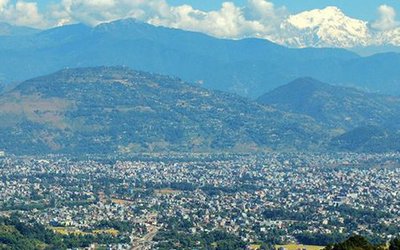
Having achieved most of the targets set by MDGs in the last fifteen years, Nepal has already embarked on meeting the Sustainable Development Goals by 2030. “Nepal has already identified the goals and it is in the process of implementation of SDGs from the coming year,” Dr. Govind Raj Pokharel, vice chairman of National Planning Commission, told New Spotlight.
Despite the prolonged political instability, with a dozen of governments coming and going in the last 15 years, MDGs guided Nepal’s development. As in the past, Nepal is likely to repeat its success in following the SDGs, which will guide development for the next fifteen years.
SDGs offer a chance to countries like Nepal to meet the citizen’s aspirations for a more peaceful, prosperous, and sustainable future. Unlike in MDGs, SDGs include 17 Global Goals for development and they can also be used in the local context.
“Sustainable development in the 21st century is not something which happens to somebody else, somewhere else. We all have a stake in it -- and every country has work to do to progress towards it,” said UNDP’s Administrator Helen Clark in her statement.
With male literacy at 75.1 percent, female literacy 42.8 percent, life expectancy birth 68.41, GDP per capita 712 and human development index 145, Nepal needs to accelerate its development activities.
Fifteen years ago, Nepal’s human indicators were very poor. It did not have money, knowledge and technology. There is more wealth, more knowledge, and more technology at its disposal now than ever before.
“Ours is the last generation which can head off the worst effects of climate change, and the first generation with the wealth and knowledge to eradicate poverty. For this, fearless leadership from us all is needed,” said Clark.
If the global community is collectively prepared to step up to the challenge of achieving the Sustainable Development Goals, then there’s a chance of achieving sustainable development – and with it better prospects for people and our planet.
Despite making progress in MDGs, Nepal is still facing poverty, inequality and climate change. This is likely to be addressed by SDGs.
The 2030 Agenda comprises 17 new Global Goals, which will guide policy and funding for the next 15 years, beginning with a historic pledge to end poverty. Everywhere. Permanently.
“The concept of the SDGs was born at the United Nations Conference on Sustainable Development, Rio+20, in 2012. The objective was to produce a set of universally applicable goals that balance the three dimensions of sustainable development: environmental, social, and economic,” said Purushottam Ghimire, former joint secretary and focal point of Nepal.
The Global Goals replace the Millennium Development Goals (MDGs), which in September 2000 rallied the world around a common 15-year agenda to tackle the indignity of poverty.
Although Nepal has made a tremendous progress in many sectors, it has still a long way to go in ending hunger, achieving full gender equality, improving health services and getting every child into school.
“This new development agenda applies to all countries, promotes peaceful and inclusive societies, creates better jobs and tackles the environmental challenges of our time—particularly climate change,” said Vice Chairperson of National Planning Commission Professor Dr. Pokharel.
As global leaders are gathering in Paris at the end of the year, it is expected that world leaders are likely to reach a global agreement on climate change at the Paris Climate Conference.
The 2030 Agenda will guide policy and funding for the next 15 years beginning with a historic pledge to end poverty. The Summit adopted the 2030 Agenda for Sustainable Development that consists of 17 goals and 169 targets to be attained by 2030.
“Agenda was both universal in scope and transformative in nature and manifested our collective pledge for the world’s sustainable development,” said former deputy prime minister Prakash Man Singh, who addressed the summit. "Good national policies, priorities, capacities and robust global partnerships should be in place for realizing the Agenda in all its dimensions.”
First of all, the process of formulating and implementing a development strategy should be people-centered and accord policy priority to achieving balanced development that encompasses the economy, society, and the environment.
In addition, given how the implementation of the Sustainable Development Goals (SDGs) represents both an investment in our future and a driving force for social change, countries should fully mobilize every resource at their disposal to implement them, while developing implementation strategies and plans that are in accord with their national circumstances.
The provision of health and education services to future generations, including girls, is the surest investment to securing a sustainable future.
The 17 Sustainable Development Goals (SDGs) represent a new direction for the global community, integrating environmental sustainability with eliminating poverty and inequality wherever it is found. The change agenda crucially now has a strong universal theme, meaning that every country needs to work towards achieving these goals and no-one should be left behind and how the SDGs fit within the wider development narrative, both in the post-2015 agenda but also how the concept of development has evolved over the decades.
The work should focus on the intersection of climate change, environment and development agenda and what that means for the INGOs, governments and implementing bodies tasked with taking this forward after the summit. How will this impact real people, especially the poorest and most vulnerable? What are the priorities and concerns for Least Developed Countries in this process?
How universality is a vital part of the SDGs – this is the key difference from the MDGs and means that the UK government for example, is as responsible for domestically meeting the goals as they are to enabling developing countries via foreign aid.
To have impact, IIED believes the Goals will have to connect with existing and legitimate policy processes at national level. The focus should not be on the imposition of a new global agenda, but on supporting and reinforcing the priorities which emerge from credible processes within countries.
Much has been written already about the post-2015 Sustainable Development Goals, or SDGs. In the making since 2013, two years ahead of the Millennium Development Goals (MDGs) deadline, the SDGs offer a lofty vision of including every last person in progress, while simultaneously ensuring that the planet is protected.
They are being adopted in a complex global context where the immediate pressures of various current crises (economic strains, natural disasters, refugees) compete with long-term challenges (inequality, exclusion, ill health, environmental destruction). So as world leaders gather this weekend in New York to officially adopt the 2030 Sustainable Development Agenda, a few questions come to mind.
What do the SDGs imply?
The SDGs are a set of 17 goals and 169 targets. Numbers aside, they bring together the poverty-disparities discourse and the environment-climate change discourse, two separate strands in global development negotiations, into an integrated agenda; and they apply to poor and rich countries alike.
This was not easy to achieve, and required leaders and lobbies to explicitly confront the possible tradeoffs of pursuing economic growth at the cost of everything else. The SDGs articulate a shared vision for the world 15 years from now.
All assessments of the MDGs point to enormous material progress on average, and a decline in the share of extreme poor people by more than half worldwide since the MDGs were adopted in 2000. In fact, this progress is led by Asia, home to more than half of humanity.
However, the MDGs agenda remains unfinished, as disparities are evident and serious challenges to people's quality of life persist, while new challenges have emerged.
“We will soon have the new goals and targets. However, we don’t have indicators on the basis of which we can actually monitor progress, so that will be the next step,” said Purushottam Ghimire, former joint secretary and focal point of SDG Nepal.
Although countries around the world are celebrating it as a panacea, it’s too early to say anything for sure. As in the past, the SDGs are just a political commitment, the goals are not legally binding. As said by political leaders, social activists and development practitioners, they are not easy to communicate beyond the development crowd.

Keshab Poudel
Poudel is the editor of New Spotlight Magazine.
- DPM’s SHRESTHA’S CHINA VISIT High Profile, Low Key
- Apr 14, 2024
- Maha Kumbha In Barahkshetra: A Sacred Festival In Sacred Koshi (Kaushiki) River
- Apr 09, 2024
- LOSS AND DAMAGE: Upper Tamakoshi A Case
- Apr 02, 2024
- Helvetas-Nepal’s InElam Promoting Herbal Oil In Sarlahi
- Mar 31, 2024
- Nepal's Transitional Justice: Gender Based Or Gender Biased
- Mar 25, 2024


